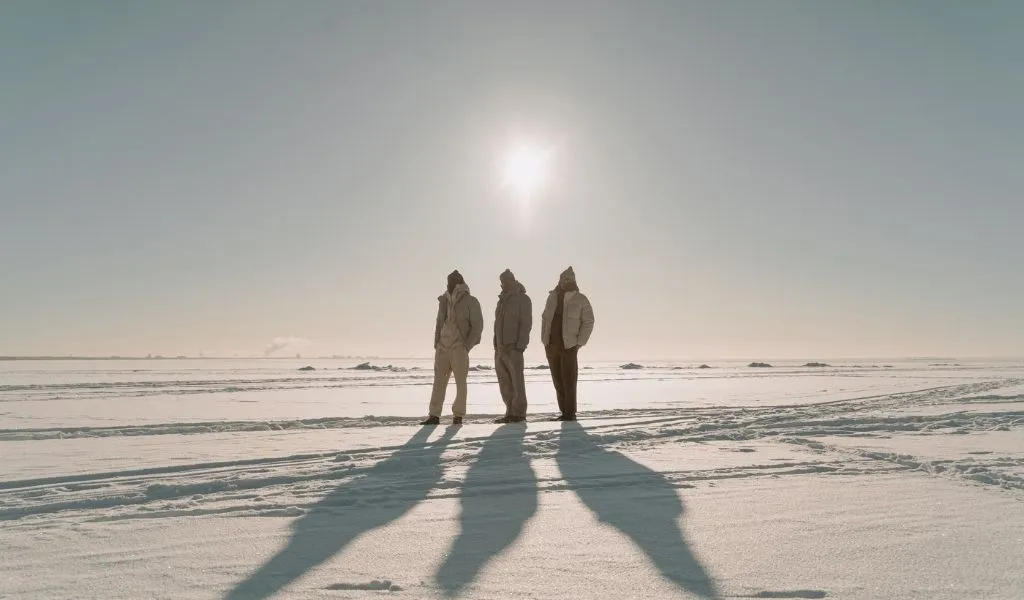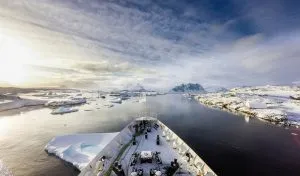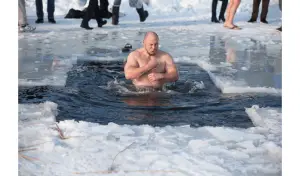Antarctica is one of the most magical places to visit on the planet. But figuring out the best time to take an Antarctica cruise can be a challenge.
The best time to visit Antarctica is between December and February if you want good weather and wildlife spotting opportunities. However, if you’re specifically interested in seeing penguins, consider visiting in January or February. For the whale watchers among us, February and March offer your best chances at spotting cetaceans.
That said, finding the ideal timing for your Antarctic expedition depends on what you want to see and experience during your journey. In this article, we’ll discuss what to expect throughout the season and the best things to do in Antarctica each month.
When Should I Visit Antarctica? A Month-By-Month Guide
Antarctica is an exceptional place to visit for any keen adventurer or wildlife enthusiast. But one of the facts about Antarctica that many people forget to consider when planning an Antarctic getaway is the short summer season with most of the continent being dark for half of the year.
To help you figure out when you should plan your trip down south, we’ve created a month-by-month guide to what you can expect on most expeditions to Antarctica.
| Month | Season | Average Temperature | Typical Weather | Total Daylight Hours | Highlights |
|---|---|---|---|---|---|
| November | Spring | 29ºF (-1.7ºC) | Cold, snowy, unpredictable | 17 | Snow-covered landscapes, lots of sea ice, penguins returning to colonies |
| December | Early Summer | 31ºF (-0.3ºC) | Warming slightly, more sun | 21 | Better weather, great seabirds on the Drake Passage, penguin breeding season, more seals and whales |
| January | Summer | 34ºF (0.9ºC) | Warm, sunny skies | 20 | Warmer conditions, less sea ice, penguin chicks start to hatch, better seal and whale spotting opportunities |
| February | Late Summer | 33ºF (0.8ºC) | Chilly temperatures, still sunny, occasional rain | 18 | Lots of penguin chicks, good weather, plenty of whales and seals |
| March | Fall | 32ºF (0.3ºC) | Unpredictable weather | 14 | Best time to see whales, penguin chicks fledging, plus great sunrise and sunset photography |
Note: All average temperature data taken from Faraday/Vernadsky Station surface averages from 2016–2020. Daylight hours are calculated for Faraday/Vernadsky Station on the first day of every month using the NOAA Sunrise/Sunset Calculator.
November in Antarctica
A journey to Antarctica in November offers a chance to see the White Continent in all its snow-covered glory. But it isn’t for the faint of heart as colder temperatures, deep snowpacks, and plentiful sea ice can make landings difficult.
With that in mind, here’s what you can expect if you travel to Antarctica in November:
- Weather – The weather in Antarctica during November is inconsistent. You can have bluebird skies one day then a big snowstorm and howling winds the next. But if you’re okay with a little cold and snow, an Antarctic November is worth experiencing.
- Wildlife – Since November is spring in Antarctica, not all of the continent’s summertime residents will be out and about. Gentoo, chinstrap, and Adélie penguins start to arrive at their nesting sites by mid-November but you won’t see too many whales or seals. Additionally, November is one of the best times to see the emperor penguin colony at Snow Hill.
- Activities – November is the best month of the year for snowshoeing in Antarctica. Photographing Antarctica in November is also a treat since you can capture the region’s pristine snow-covered landscapes before the seasonal melt in midsummer.
December in Antarctica
December is the start of the proper summer season in Antarctica. Warmer conditions and increased wildlife sightings are the names of the game as we get closer to the summer solstice.
Antarctica experiences a phenomenon called midnight sun which is where the sun does not set for more than 24 hours, this happens around the summer solstice (20th or 21st December). This can be witnessed just south of the Antarctic circle and the further south you go, the longer the midnight sun lasts.
But you don’t have to visit around these dates to enjoy the broader benefits of the midnight sun season, the entire continent experiences long days throughout December.
This is what you’ll likely experience if you journey down south in December:
- Weather – December isn’t quite the warmest time of year in Antarctica, but it’s pretty darn close. The sun barely sets in December, so don’t forget to head outside at night to experience that gorgeous midnight sun. Snowstorms and gales are still fairly common in December, but the weather is normally better than in November.
- Wildlife – By December, penguin colonies are busy places as mating season is in full swing. You’ll start to see quite a few seabirds on the Drake Passage, and hopefully a wandering albatross or two. Seals and whales become more abundant in the Southern Ocean in December, too.
- Activities – The start of summer offers several opportunities for activities in the Antarctic. Snowshoeing conditions usually stay good until mid to late December and kayaking becomes much more pleasant. The warmer temperatures also make short camping trips more enjoyable.
January in Antarctica
If true Antarctic summer conditions are what you seek, consider visiting during January.
Although the summer solstice is in December, January is the warmest month of the year in much of the Antarctic Peninsula. Most animals that migrate seasonally to Antarctica arrive in the region by January, too, so it’s a great time of year to see a wide array of wildlife during your trip.
Here’s a quick look at what you can expect during a January visit to Antarctica:
- Weather – Warmer temperatures and minimal precipitation dominate January in Antarctica. Storms can happen, though, so be prepared for anything during your trip.
- Wildlife – If you want to experience a little bit of everything during your trip to Antarctica, January is a sure bet. Penguin chicks start hatching by mid-January while both seals and whales are abundant throughout the Southern Ocean. The seabird viewing on the Drake is also excellent.
- Activities – The snowshoeing season is over by early January, but kayaking and camping are excellent alternative activities. Better yet, you can hang out at the penguin colony and watch as the littlest of penguins hatch from their eggs and start to explore their surroundings.
However, January is also peak season for visiting Antarctica so prices tend to be slightly higher. The typical cost of visiting Antarctica is between $7,000 and $40,000 per person including pre and post-trip expenses. However, in some of the trips we reviewed, there was usually a 10-15% price difference if you choose to visit in January vs December.
February in Antarctica
When wildlife viewing is your number one goal, February in Antarctica is hard to beat.
Technically, February is considered late summer on the Antarctic Peninsula, so most of the region’s animals are busy preparing for winter. This means plenty of activity at the penguin colonies plus great opportunities for whale watching.
This is what you can expect during most February voyages to Antarctica:
- Weather – Antarctic weather in February is temperamental, but it’s generally good. Temperatures are still warm and huge storms aren’t common. But the days will get shorter much more quickly and fresh snow is possible.
- Wildlife – February provides excellent opportunities for wildlife watching. Whether you want to see penguin chicks bopping around the colony or lots of whales, it’s hard to beat February in the Antarctic.
- Activities – Camping and kayaking conditions are still good in February. There’s enough snow on the ground for the campers to enjoy and sea ice levels are generally low in February, making kayaking fun and convenient.
March in Antarctica
March in Antarctica signals the end of the summer and the start of the very brief autumn season.
Few expedition companies offer voyages beyond mid-March to the Antarctic Peninsula. But the start of March offers some fun opportunities to see the continent before it gets immersed in darkness for the colder months of the year.
If you’re ready for a true adventure, here’s what you can expect during a March trip to Antarctica:
- Weather – The weather in Antarctica during March is fickle. Colder temperatures and snowfall are to be expected. Storms tend to get a little bigger on the Drake Passage, too.
- Wildlife – March is a great time to see penguin chicks as they start to fledge. There aren’t many sea birds on the Drake during March, but the whale watching possibilities are fantastic.
- Activities – There won’t be much snow on the ground by March, so be prepared for lots of penguin guano on your boots after each landing. Kayaking is still possible, but camping opportunities tend to disappear by mid-March. Sunset and sunrise photography opportunities, on the other hand, are impeccable as the days get shorter in the Antarctic.
Related Questions
What Are the Warmest Months in Antarctica?
The warmest month in Antarctica is January, though temperatures above freezing on the Antarctic Peninsula regularly happen between December and March. Daily temperatures can vary, but monthly average temperatures at Rothera Station reach a high of 34.5ºF (1.4ºC) in January and a low of 12.7ºF (-10.7ºC) in July.
When is the Best Time To See Penguins in Antarctica?
The best time to see penguins in Antarctica is between January and February. Between January and February, gentoo, chinstrap, and Adélie penguin chicks start to hatch, which makes for excellent photo-taking opportunities. But if you want to see emperor penguins, November offers the best conditions for visiting the colony at Snow Hill Island.
When is the Best Time To See Whales in Antarctica?
The best time to see whales in Antarctica is between February and March. During February and March, most of the whales that migrate seasonally to Antarctica are trying to eat as much as they can before they start their long journey back up north. The whales in Antarctica tend to be very active during the latter part of the summer, which makes for better whale spotting.





![Read more about the article Camps & Hotels in Antarctica: 8 Best Places to Stay [in 2024 and 2025]](https://polarguidebook.com/wp-content/uploads/2022/04/Echo-Camp-Antarctica-300x150.jpg)